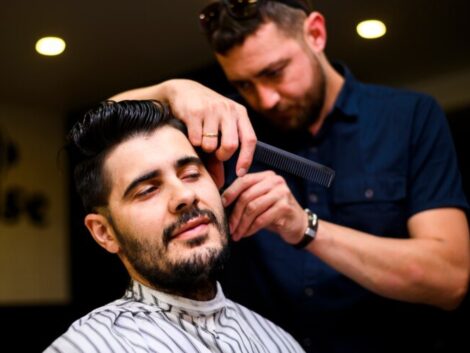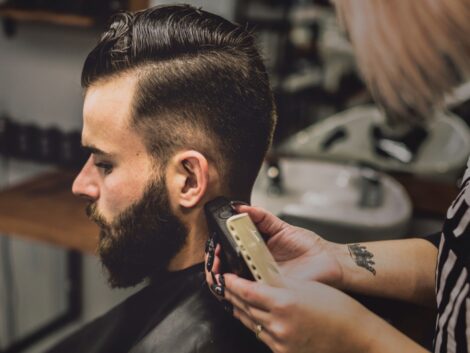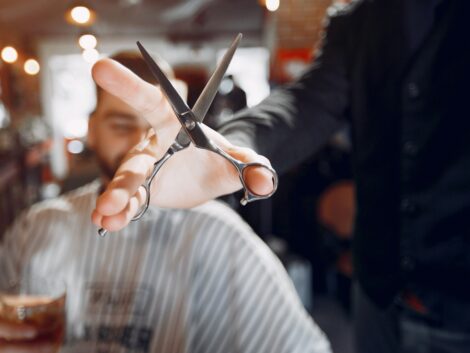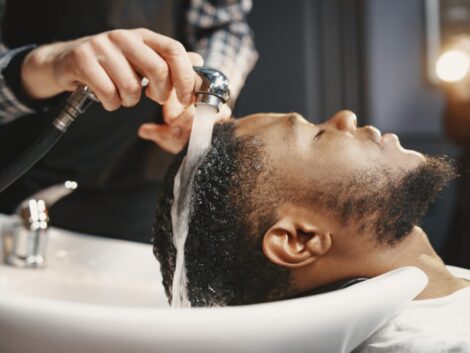Certainly! In recent years, there has been a noticeable shift towards more gender-neutral approaches in the beauty and grooming industry, including barbering. Salons and barbershops are increasingly moving away from traditional gender-specific services, with training programs for barbers opting for inclusive environments that cater to diverse clientele.
For instance, some establishments have replaced gendered pricing with a unified pricing structure for haircuts, emphasizing the service provided rather than associating it with a specific gender. Additionally, stylists and barbers are receiving training to understand better and meet the unique needs of all clients, irrespective of gender identity.
Moreover, the industry is witnessing the emergence of gender-neutral or unisex salons that explicitly promote an inclusive atmosphere. This broader acceptance is reflective of society’s evolving understanding of gender and a growing commitment to breaking down traditional stereotypes in grooming practices.
How Are Barbershops Adopting Gender-Neutral Policies and Practices?
Barbershops adopt gender-neutral policies and practices in several ways:
- Inclusive Services: Many now offer inclusive services that focus on individual preferences rather than traditional gendered haircuts. This approach allows clients to express their style without conforming to societal gender norms.
- Training for Barbers: Barbers receive training to provide gender-sensitive and inclusive services. This includes education on diverse hair textures, styles, and cultural considerations, ensuring they can meet the unique needs of all clients, regardless of gender identity.
- Unified Pricing: Some barbershops are moving away from gender-based pricing, opting for a standardized pricing model for all hair services. This promotes fairness and eliminates potential discrimination based on gender.
- Inclusive Language and Marketing: Barbershops use inclusive language in their marketing materials and on-site communication to create a welcoming atmosphere for everyone. This involves avoiding gender-specific terms and embracing more neutral language.
- Unisex Spaces: The emergence of unisex or gender-neutral salons and barbershops explicitly caters to clients seeking an inclusive environment. These spaces are designed to be welcoming to individuals of all gender identities.
- Open-minded Atmosphere: Creating an open and accepting atmosphere within the barbershop contributes to a positive client experience. This includes fostering an environment where everyone feels comfortable expressing their unique style without judgment.
By incorporating these practices, barbershops are contributing to a more inclusive and diverse approach to grooming, challenging traditional gender norms in the process.
Can Barbers Cut Hair in a Way That Is Not Defined by Traditional Gender Norms?
Yes, barbers can certainly cut hair in a way that transcends traditional gender norms. Many barbers are embracing a more inclusive approach, offering haircut options that focus on individual style preferences rather than adhering to conventional gender stereotypes. This shift allows clients to express their unique identities and personal tastes without being confined to traditional expectations.
The following are examples of some very popular gender-neutral haircuts:
- Undercut: An undercut involves short sides and back while leaving the top longer. It’s a versatile style that can be adapted to various lengths on the top, making it suitable for different gender expressions.
- Pixie Cut: A pixie cut is a short, cropped hairstyle that is both chic and gender-neutral. It can be customized with variations in length and texture to suit individual preferences.
- Textured Crop: The textured crop is a short haircut with added texture and layers. It’s a modern and adaptable style that works well for various hair types and can be customized to suit any gender identity.
- Shag Cut: The shag cut is a layered haircut that can be tailored to different lengths and styles. Its versatility makes it suitable for individuals seeking a gender-neutral and effortlessly cool look.
- Long Bob (Lob): The long bob, or lob, is a medium-length haircut that falls between a traditional bob and longer styles. Its balanced length and adaptability make it a gender-neutral choice that suits a range of preferences.
What Challenges Do Barbers Face When Cutting Hair in a Gender-Neutral Manner?
Barbers face several challenges when cutting hair in a gender-neutral manner:
- Diverse Style Preferences: Catering to a wide range of style preferences requires barbers to stay informed about evolving trends and techniques that accommodate various gender expressions.
- Understanding Individual Identities: Barbers may encounter challenges in understanding and respecting the diverse gender identities of their clients. Each individual may have unique preferences that go beyond traditional categories.
- Hair Texture Variability: Different hair textures require different cutting and styling techniques. Barbers need to be skilled in working with various textures to achieve the desired gender-neutral look.
- Navigating Cultural Sensitivities: Cultural factors may influence hairstyle preferences, and barbers must be sensitive to these differences to create an inclusive and respectful environment for all clients.
- Client Expectations: Balancing client expectations with the desire to provide gender-neutral services can be challenging. Effective communication is essential to ensure clients are satisfied with their haircut experience.
Overcoming these challenges involves
- Ongoing education.
- Open communication with clients.
- A commitment to creating an inclusive and welcoming atmosphere within the barbershop.
How Do Customers Respond to Gender-Neutral Haircut Options at Barbershops?
Customer responses to gender-neutral haircut options at barbershops can vary widely. Some customers appreciate and embrace the inclusive approach, feeling more comfortable expressing their unique style without conforming to traditional gender norms. They see it as a positive step towards breaking down stereotypes in grooming.
However, responses can also depend on individual preferences, cultural influences, and personal comfort levels. While many customers welcome gender-neutral haircut options, others may still prefer or expect more traditional gendered services. It’s important to note that societal attitudes toward gender expression are evolving, and acceptance of gender-neutral options is increasing.
Overall, the reception of gender-neutral haircut options is a dynamic and evolving aspect of the grooming industry, reflecting the broader societal shift towards inclusivity and diverse expressions of identity.
Are There Training Programs for Barbers to Cater To Diverse Gender Identities?
Yes, there are training programs for barbers to cater to diverse gender identities. Many educational institutions, grooming academies, and professional organizations now offer courses focusing on inclusive haircutting techniques and understanding different gender expressions. These training programs aim to equip barbers with the knowledge and skills needed to provide services that respect and meet the diverse needs of their clientele.
These courses may cover topics such as:
- Understanding Gender Diversity: Providing education on the spectrum of gender identities, including non-binary and genderqueer expressions.
- Inclusive Haircutting Techniques: Teaching barbers how to create hairstyles that are not confined to traditional gender norms and can cater to various individual preferences.
- Cultural Sensitivity: Addressing cultural considerations and sensitivities related to gender expression and grooming practices.
- Effective Communication: Guiding communication strategies to ensure barbers can engage with clients and understand their specific haircut preferences.
By participating in such training programs, barbers can enhance their skills, stay updated on industry trends, and create a more welcoming and inclusive environment for clients of all gender identities.
Lastly, check out the mane caper shop.





